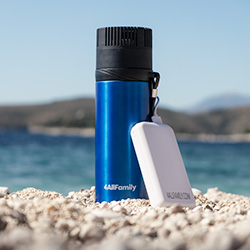Some of the links in this post are affiliate links. If you use the link to make a qualifying purchase, I’ll make a small commission at no extra cost to you. As always, thanks for being here!
Looking for a simplified way to prepare for travelling with type 1 diabetes? Follow this diabetes travel checklist to make sure you’re fully organised for your next trip!
I’m a huge believer that having type 1 diabetes should never hold you, me, or anyone back from achieving anything in life – especially travelling the world and enjoying the rich, fulfilling and epic experiences that come with travel!
Having said that though, there’s no hiding that travelling abroad with type 1 diabetes does require more planning and organisation compared to our fellow travellers who don’t have the condition.
And I know this all too well.
I’m always envious of my partner Lucy who doesn’t have to worry about stocking up on extra medication and supplies, finding travel insurance that covers diabetes, packing for hypo emergencies, or researching portable insulin coolers that keep life-saving medicine at a safe temperature.
She just packs what she needs the night before, grabs her passport and heads off to the airport – what an easy life eh!
Well, to try and simplify the process, I’ve created this diabetes travel checklist which includes everything I check, organise, and pack before any trip abroad.
Whether it’s a short city break, a laidback resort holiday, or an extended backpacking trip, following this checklist will help ensure you’re prepared for your next adventure!
Please note: This article is not medical advice. Always consult your doctor when making decisions about your diabetes medication and management.
Pre-travel Type 1 Diabetes Check List
These are all my pre-travel checks and preparations to make sure I’m in the best place possible diabetes-wise by the time I’m en route to the airport departure lounge.
It’s far from the glamorous part of travelling but preparing the diabetes side of travel is just as essential as the exciting things like booking flights, hotels, and tours!


1. Medical Checkup
Before any trip overseas it’s a good idea to make an appointment with your GP or diabetes healthcare team.
As well as having a look at your recent diabetes management and control, you can make sure all your routine blood tests, eye checks, and feet checks are all up to date.
In my experience, diabetes nurses and specialists are always keen to hear about upcoming trips. They usually go through some pre-travel checks with me (no matter how many times I’ve heard it) and want to make sure I’m as prepared as possible from a diabetes standpoint.
If you’re heading somewhere far and away where things like the climate, time zone, and food are quite different to home, your healthcare team can give you helpful advice on how best to manage your diabetes in these situations.
Finally, your GP will be able to provide you with a copy of your prescription and a letter that states you have diabetes and all the medication and devices that you need to travel with. This letter is just a precautionary measure in case it’s requested by an airline or airport security.
I’ve never needed mine in all the years I’ve carried one, but you know how it goes – the time you need it will be when you don’t have it!
On the other hand, I’ve been asked for my prescription a couple of times. But apart from when entering Cuba, this has always been when leaving the UK – specifically at London’s Stansted Airport. They always take a keen interest in my insulin there for some reason!
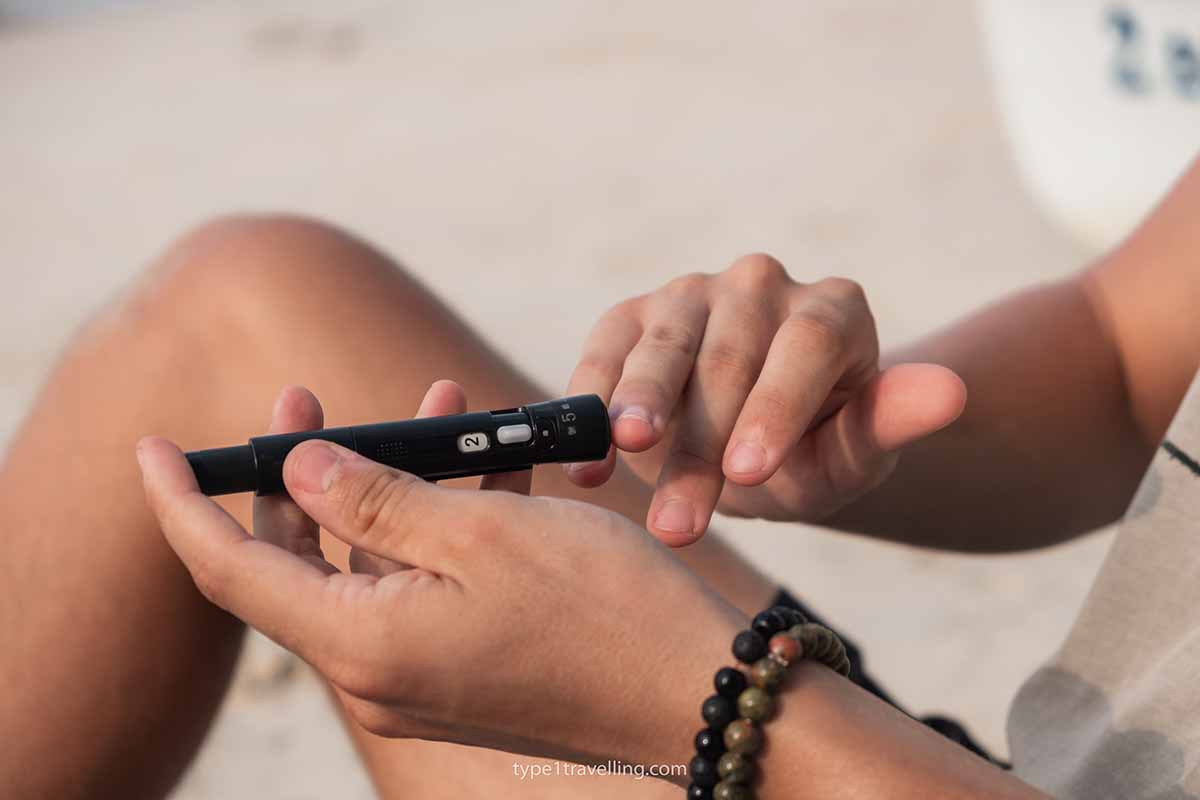
2. Gather Medication and Spare Devices
Something you’re probably already thinking about is getting enough insulin and other diabetes supplies to cover your trip.
I’d recommend tracking how much insulin, needles, test strips etc you normally use (I use a simple spreadsheet) in advance of your trip. This will give you an accurate idea of how much you’ll need to request a prescription for.
The general rule of thumb is to try and take double what you’ll need as a precaution. This means you’ll have peace of mind should you face any unexpected issues like travel delays, disruptions or misplaced medication.
I was guilty of thinking ‘these things won’t happen to me’ until the time I left insulin behind in a mad checkout dash and was luckily saved by my extra supply and spare pen!
However, if you are travelling for an extended period, such as a backpacking trip, I know packing more than what you’ll need isn’t as easy. You’re probably already packing a big supply that takes up valuable space.
In this case, I’d recommend doing a bit of research into how accessible your insulin and other supplies are in the places you’re visiting. I usually find speaking to my healthcare team, emailing my insulin manufacturers, reaching out to local diabetes associations, and a good old Google search the best ways to do this.
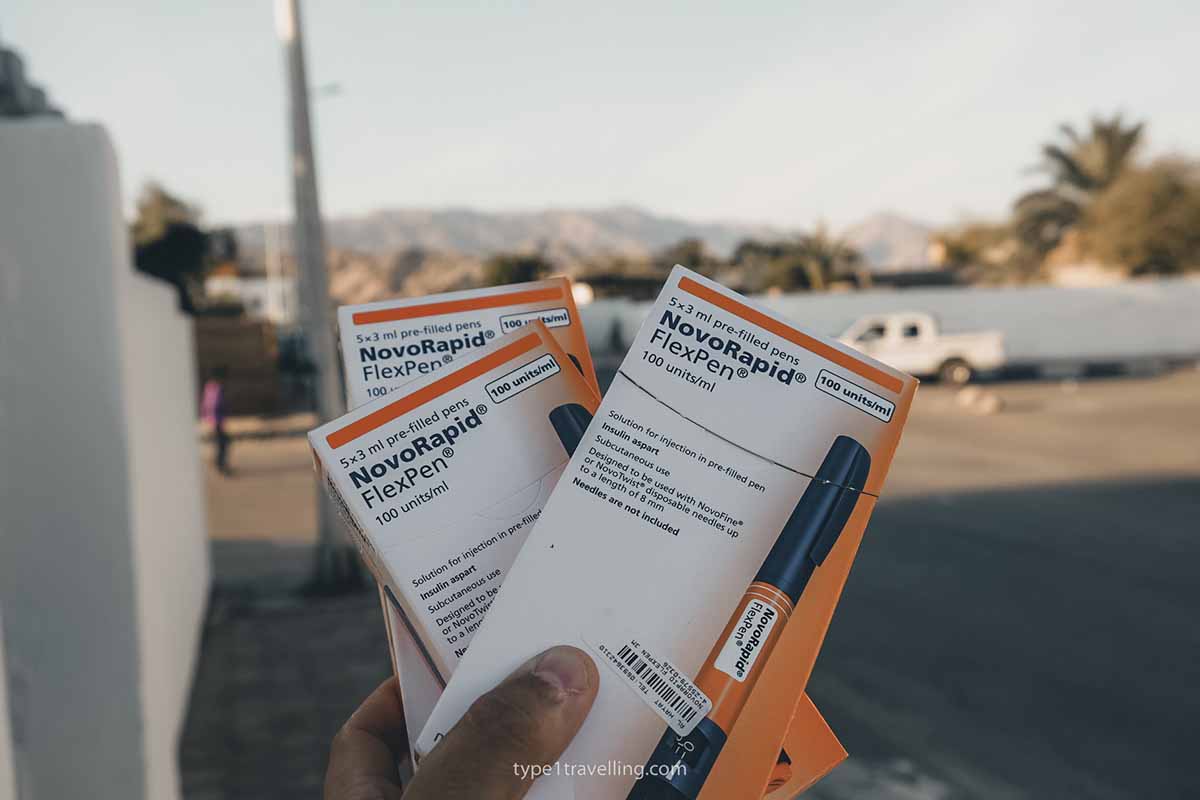
Related Post: How To Get Insulin Abroad
3. Check Expiry Dates
Something that is easy to overlook is checking the expiry dates of your medication.
This is less important if you’re getting a fresh prescription or if you aren’t going away for long.
However, if you’re packing medication that has been sitting around or you’re going on an extended trip, it’s worthwhile checking.
4. Buy Travel Insurance Covering Type 1 Diabetes
Another essential pre-travel task that too many people disregard is getting adequate travel insurance.
You don’t need to tell me how annoying it is to pay for something that you hopefully won’t need but unfortunately, it’s just something we need to have. The last thing you want is to be handed a hefty medical bill or forking out for extra flights when accidents or unforeseen disruptions happen.
It’s not just any old travel insurance policy that diabetics need though, it’s essential to get insurance that covers pre-existing medical conditions. Otherwise, you won’t be reimbursed for any medical or cancellation claims relating to diabetes.
Unfortunately not all providers cover pre-existing conditions but my favourite that does is True Traveller. They have been my go-to travel insurance for all of my adventures since 2023 and I can’t fault their great prices, quality coverage, and helpful customer service!
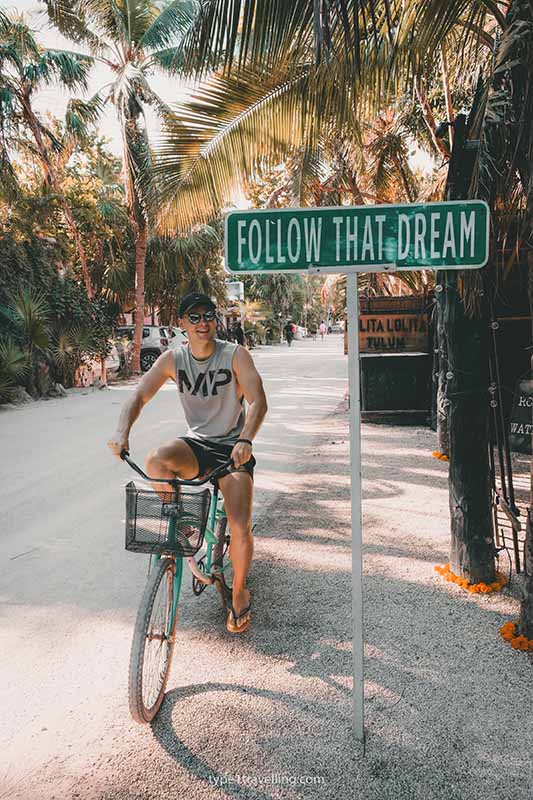
Read The Full Guide: Best Travel Insurance For Type 1 Diabetes
5. Global Health Insurance Card (GHIC) – For British Travellers
If you are a resident of the UK and travelling to anywhere in the European Economic Area or Montenegro, Switzerland, or Australia, it’s important that you have your GHIC with you.
This replaced the EHIC (which is still valid until it expires) after Brexit and entitles you to receive necessary state healthcare and prescriptions at the same rate as a normal resident would. The exact process and cost will differ from country to country depending on each one’s healthcare system.
This isn’t a replacement for travel insurance but it’s important to have both if you are visiting any of these destinations.
You can apply for your GHIC online easily from the NHS. The cost is free and it will remain valid for five years.


6. Get Your Travel Vaccines
While not directly related to diabetes, it’s a great idea for diabetics to get up to date with travel vaccines.
This is because getting sick can not only leave a negative stamp on your trip but also cause havoc with diabetes management.
If you have ever had a sick day then I’m sure you’ll resonate with this!
Therefore, it’s best to take all the preventative steps we can to make sure we stay as healthy as possible. And one easy thing to do is get vaccinated.
The vaccines that I make sure I’m up to date with before travelling are:
- Hepatitis A
- Hepatitis B
- Tetanus
- Typhoid
- Rabies
- Yellow Fever
Important: This is not medical advice, always consult your healthcare team about what is best for you.
I recommend not leaving this until the last minute as some vaccines need multiple doses which are spaced out over a specific period. I try to get these organised around 3 months in advance because once they’re done, they’re done!
Start by making an appointment with your GP or practice nurse to check what vaccines you have/haven’t had. They’ll then be able to give advice on what vaccines are advisable for the destinations you’re visiting.
The NHS’s Fit For Travel website is also a helpful place to get vaccine advice. Simply select your destination and you’ll find information about recommended vaccines, malaria, and more.
If you are a UK resident you can get some travel vaccines for free (including Hepatitis A, Tetanus, and Typhoid), whereas others you’ll have to pay for.
7. Make Copies of Your Documents
As well as having extra copies of some classic travel documents like passports, boarding passes, and travel insurance details, it’s advisable to do the same for your prescription and letter from your doctor.
I’d also recommend making digital copies – I scan everything into a folder on my iPhone’s notes app so everything is easily reached and printable if needed.
What to pack – My Ultimate Travelling With Diabetes Packing List
Once you’re well on your way with pre-travel checks, you’ll also be thinking about what to actually take with you.
Well, here’s my diabetes packing list that I follow for all my trips to make sure I have everything I need from a diabetes perspective.
But before I get into the packing list, it’s worth noting that for my diabetes management I use Insulin cartridges (Novorapid and Levemir) in re-usable pens, the Freestyle Libra 2 continuous glucose monitor, and an Accu Chek Instant blood glucose metre.
Now, these days there are many different methods and devices used to manage type 1 diabetes so if you use different insulin or devices (such as an insulin pump) just substitute for what you use.
Pro travel tip: Split your diabetes supplies with any travel companions to minimise risk in case a bag is lost or stolen.
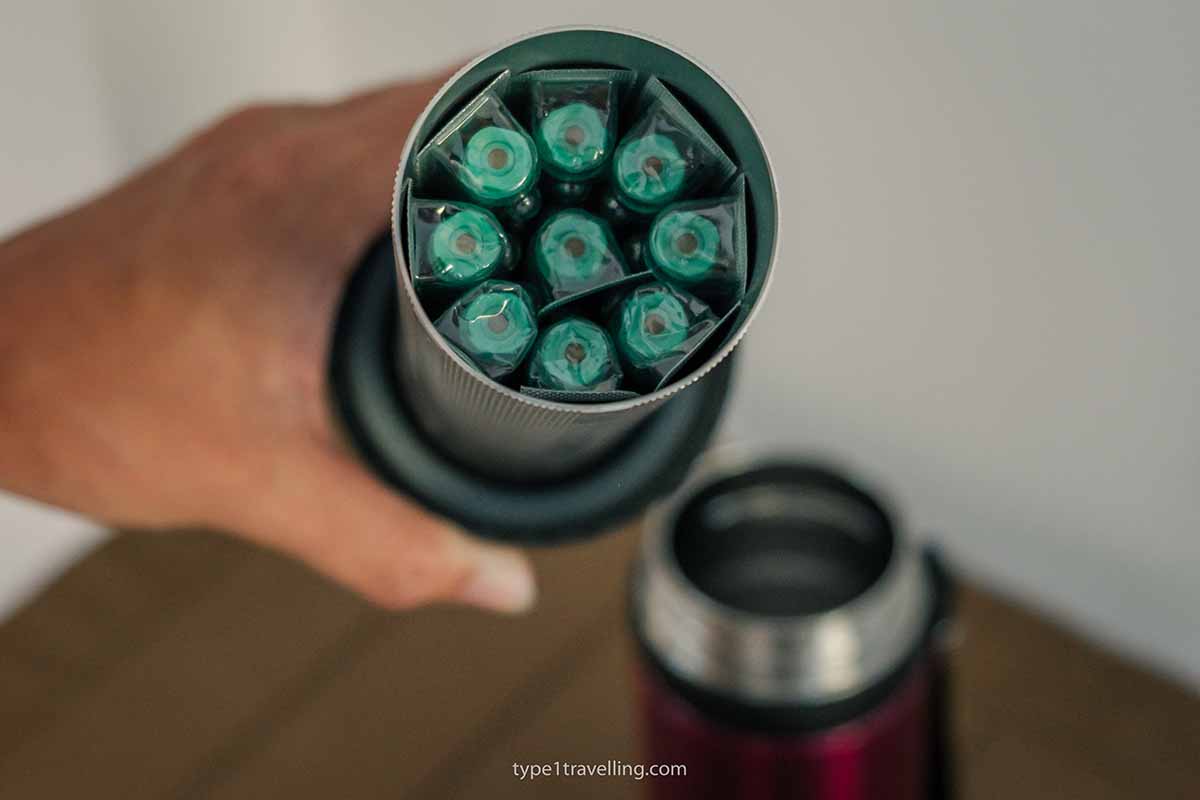
Medication and Devices
- 4 x Reusable Insulin Pens – One for each insulin and two spare.
- Insulin Cartridges – double the amount needed if possible.
- Insulin pen needles – double the amount needed if possible.
- Freestyle Libre 2 sensors – double the amount needed if possible.
- D Patches – to protect sensors from sweat, suncream, and catching on anything.
- A backup blood glucose meter, test strips, and a spare battery – even when using a CGM I have this packed as a precaution.
- Ketone testing kit
- Insulin cooling case – to keep the insulin I’m using cool in hot destinations.
- Portable travel fridge – to keep my unopened insulin at fridge temperature while travelling.
- Diabetes travel case – A handy case to keep needles etc.
Documents
- A doctor’s letter – stating I’m diabetic and the medicine and devices I need to travel with.
- A copy of my prescription
- Contact details of my diabetic health team or nurse – in case I need advice while away.
Hypo Treatment
- Dextrose glucose tablets – my favourite fast-acting sugar as they are easy to pack and mean I don’t have to worry about liquid at airport security.
- Slow-release carbs and snacks – digestive biscuits are my usual choice.
Other
- A form of Medical ID – I prefer a necklace but you can also opt for a bracelet. Adding a medical alert to your smartphone’s lock screen is also possible.
To Finish
Preparing to travel with diabetes can feel overwhelming at times but it shouldn’t put you off taking that that trip!
I hope this checklist helps simplify the pre-travel process and the important things to check, plan, and organise before your trip starts.
Feel free to reach out in the comments below if you have any questions. I’m also always happy to talk about travel and diabetes in my email or Instagram DMs!
More Travel and Diabetes Guides
Check out some of my other Travel and Diabetes blog posts which are full of helpful information and my personal experiences!

